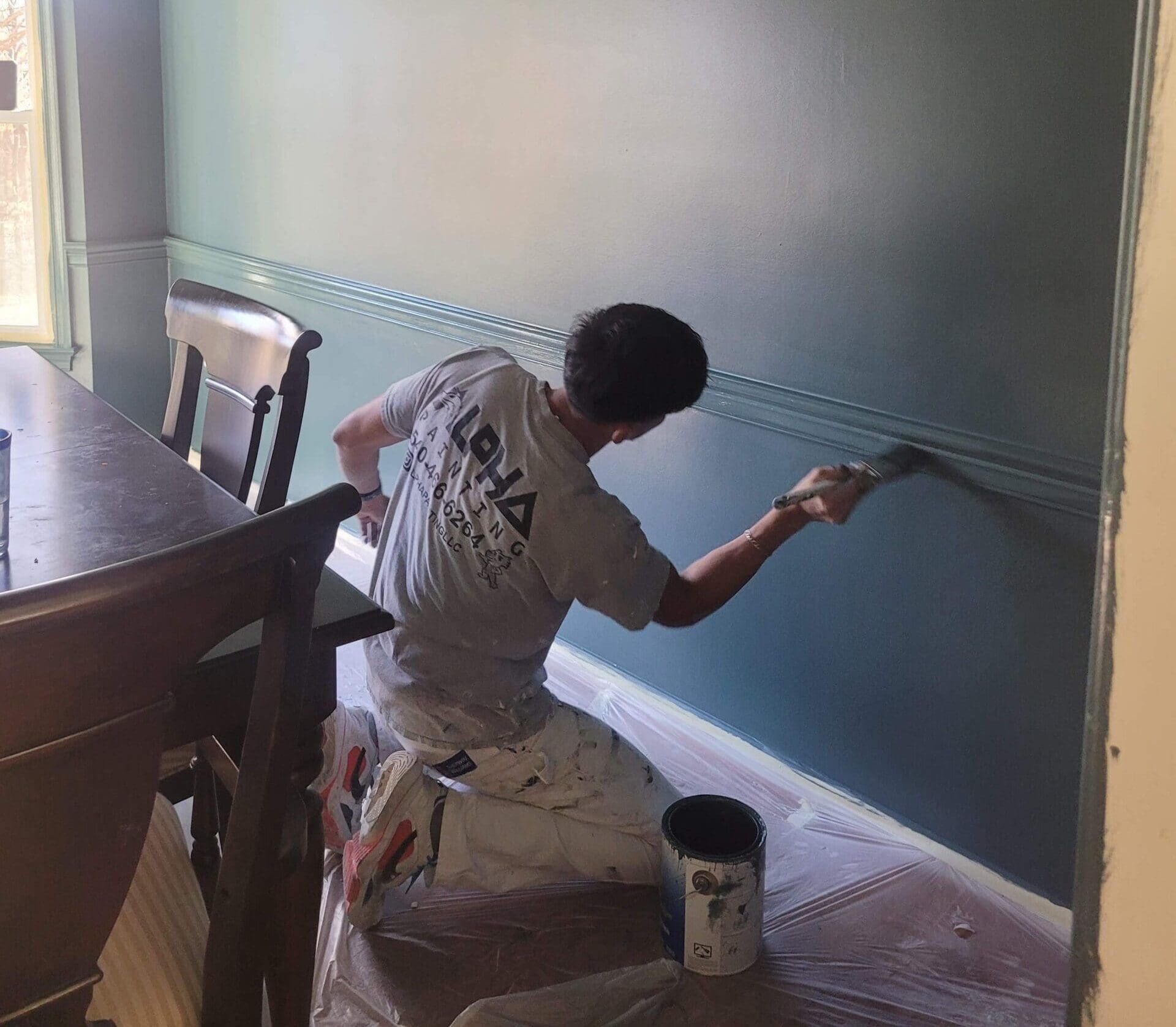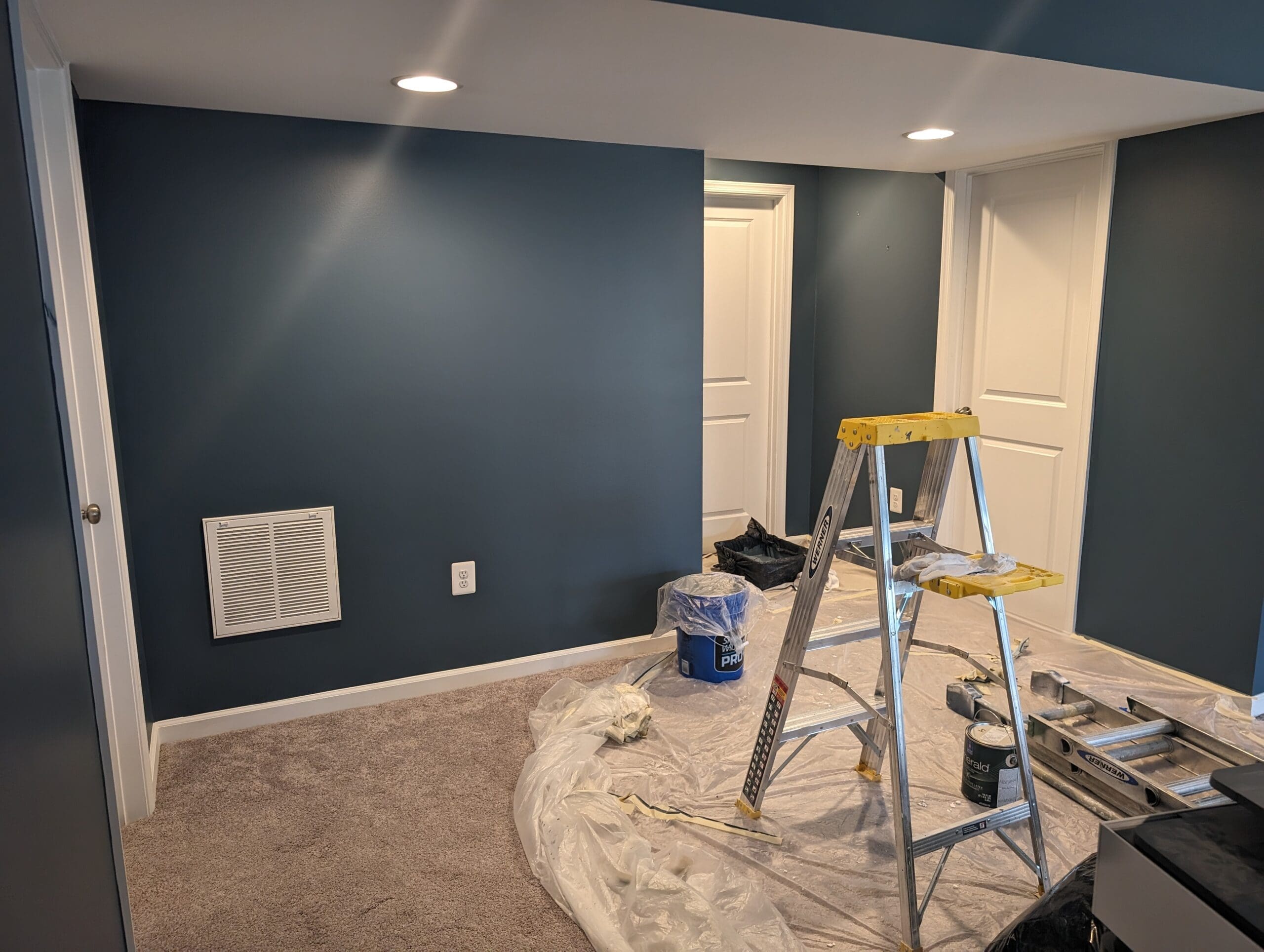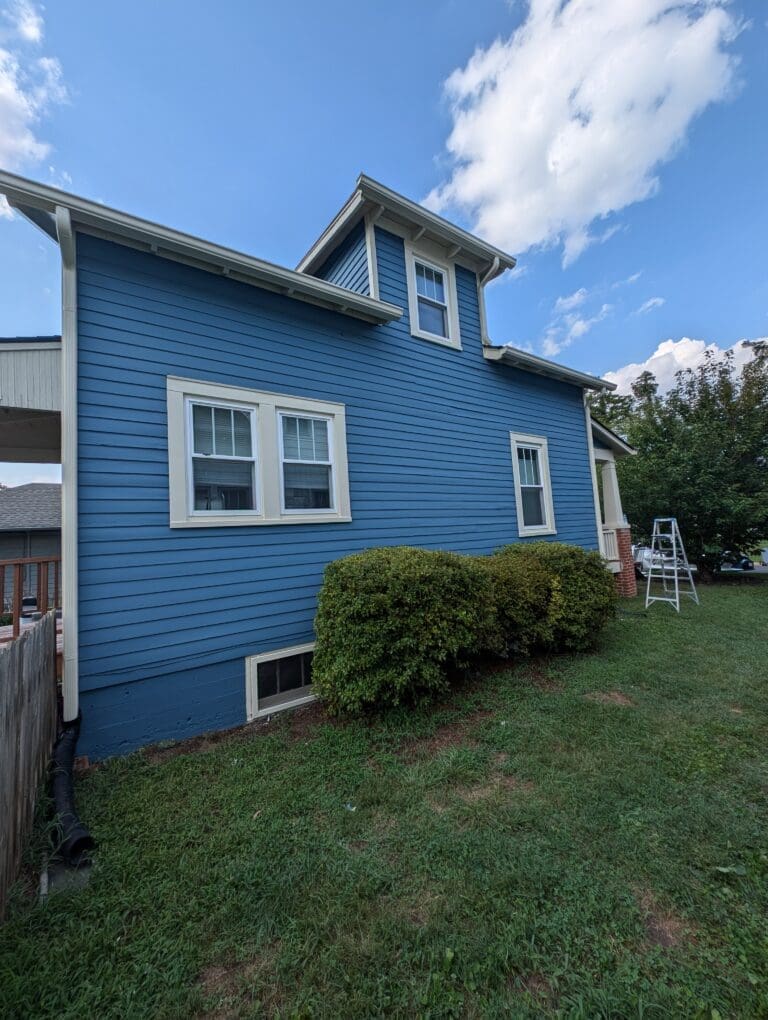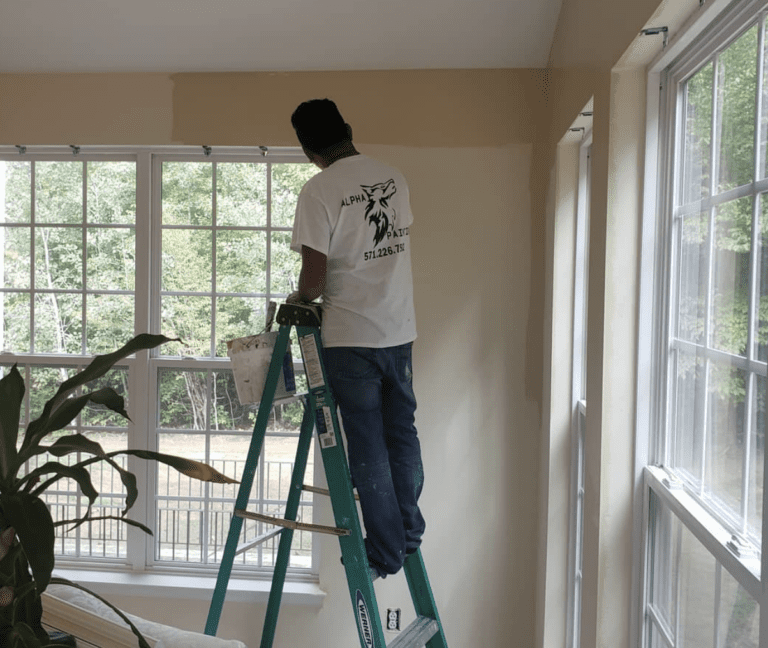How to Choose Low-VOC Paints That Are Safe for Your Family
Freshly painted walls have a way of transforming a home, but the smell that lingers after painting is not just an inconvenience—it’s often a sign of chemicals being released into the air. Those chemicals are called VOCs, or volatile organic compounds, and they can cause health concerns ranging from headaches and nausea to long-term respiratory problems. Families with children, elderly relatives, or anyone sensitive to air quality should pay special attention to the kind of paint being used inside the home. Choosing low-VOC or zero-VOC paints helps reduce indoor pollutants while still delivering a beautiful finish.
At Alpha Painting, we see more homeowners in Fredericksburg and surrounding areas asking for safer paint options, and it’s a smart step toward creating a healthier living space.
Table of Contents
What VOCs Are and Why They Matter
Volatile organic compounds are chemicals that vaporize at room temperature. They’re added to paints and coatings during the manufacturing process to help with durability, spreadability, and drying times. The problem is that once applied, these compounds off-gas into the air for days, sometimes even weeks. This off-gassing is the source of the “new paint smell” many people associate with fresh renovations.
Short-term exposure can trigger irritation in the eyes, nose, or throat, along with dizziness and fatigue. People with asthma or allergies may experience worse symptoms. Long-term exposure has been linked to more serious health concerns, making it worth the extra effort to avoid products loaded with VOCs. Homes are meant to feel safe, and air quality is just as important as appearance when deciding how to paint a space.
Understanding the Labels: VOC Content in Paint
Walking through a paint aisle, you’ll see labels like “low-VOC” and “zero-VOC.” These terms sound straightforward, but they’re not always regulated in a way that makes them easy to interpret. A paint marketed as low-VOC in the United States typically contains fewer than 50 grams of VOCs per liter of paint. Zero-VOC paints often contain under 5 grams per liter, but small amounts of VOCs can still be present.
What complicates matters is that adding colorants to paint can increase VOC levels. A paint base may qualify as zero-VOC, but when a deep color is mixed in, the overall VOC content may rise. This doesn’t mean you should avoid color, but it highlights why it’s important to ask the right questions before making a purchase.
Low-VOC vs. Zero-VOC Paints
The difference between low and zero-VOC paints often comes down to how sensitive your household is to odors and chemicals. Families with infants, elderly residents, or people who suffer from allergies may feel more comfortable going with zero-VOC products, as they minimize exposure.
Low-VOC paints still offer major improvements compared to traditional paints, especially for spaces that get plenty of ventilation. Bedrooms, nurseries, and kitchens tend to benefit most from the cleanest paints possible, since they’re high-use areas where people spend hours each day. Even if zero-VOC options cost slightly more, many homeowners consider it a worthwhile investment for peace of mind.
Performance of Low-VOC Paints
A common question is whether safer paints compromise on quality. Years ago, low-VOC paints sometimes fell short when it came to coverage, durability, or washability. Modern formulations, however, have improved significantly. Reputable brands now offer low- and zero-VOC paints that resist stains, maintain vibrant color, and hold up well against scrubbing.
One point to keep in mind is that surface preparation remains just as important with low-VOC paints as with traditional formulas. Cleaning walls, repairing imperfections, and applying primer when necessary all contribute to a long-lasting finish. With proper preparation, these paints can deliver results equal to or better than standard paints, all while keeping the air in your home safer to breathe.
Questions to Ask Before Buying Paint
When you’re standing in front of rows of paint cans, it can feel overwhelming to make the right choice. Asking a few specific questions can make the process easier and more informed. What is the exact VOC level per liter of the product? Does the VOC content change when colorants are added? How well does the paint resist mold or mildew? Is it washable and durable for high-traffic areas? Getting clear answers ensures that you’re not just buying a label, but a product that truly matches your family’s needs.

It also helps to check for third-party certifications like Green Seal or GREENGUARD Gold, which test paints for health and environmental standards beyond the minimum regulations. These certifications give added reassurance that what’s inside the can aligns with the claims on the label.
Rooms That Benefit Most from Low-VOC Paints
Every space in the home can benefit from improved air quality, but some areas should be top priority. Bedrooms, especially for children, deserve the cleanest air possible since sleep environments directly impact overall health. Kitchens are another high-priority area because of the combination of cooking fumes and general use. Nurseries and playrooms are often the first places parents want to paint safely, as young children are more sensitive to chemical exposure.
Even bathrooms and laundry rooms are smart candidates for low-VOC paints, not only because of their frequent use but also because moisture can intensify chemical odors. Choosing paints designed to resist mold growth in these spaces adds another layer of protection.
Tips for a Healthier Painting Project
Even with the right paint, there are steps you can take to make the painting process safer. Always ensure proper ventilation during and after painting by opening windows or using fans to circulate fresh air. Try to schedule painting projects when the weather allows for extended ventilation, rather than during cold months when windows need to stay closed.
It’s also wise to plan your project so that painted rooms can remain unoccupied for at least a day or two, giving the paint time to cure and reducing immediate exposure. Using high-quality brushes and rollers can also make a difference since they help apply paint evenly without creating unnecessary splatter or excess fumes.
Why Professional Help Matters
DIY painting can be rewarding, but the decision to use low-VOC paints is often part of a bigger goal of creating a safe and long-lasting finish. Professionals bring knowledge about which brands live up to their low-VOC claims, how to prepare different surfaces for the best results, and how to achieve a flawless finish without wasted time or materials. For families juggling busy schedules, hiring a skilled crew saves both effort and guesswork.
Professional painters also know how to minimize disruption in the home, keeping rooms livable while projects are completed efficiently. For homeowners in Fredericksburg, Alpha Painting provides both interior and exterior painting with safe paint options, including low- and zero-VOC solutions that protect your family’s air quality.
Looking Ahead: The Future of Safer Paints
Paint manufacturers continue to refine formulas that deliver strong performance with fewer chemicals. With stricter regulations and increased demand from health-conscious homeowners, the selection of low-VOC and zero-VOC paints is only going to grow. This is good news for families who want their homes to be stylish, functional, and safe at the same time.
Advances in eco-friendly paints are also promising. Some products are now made with plant-based binders and natural pigments that go beyond lowering VOCs, offering a greener alternative from start to finish. While these products may not be as widely available yet, they represent an exciting direction for the industry.
Final Thoughts
Choosing low-VOC paints is about more than following a trend—it’s about making informed decisions for the health and comfort of your family. By learning what VOCs are, understanding how labeling works, and focusing on rooms where safety matters most, you can feel confident about the air your family breathes each day. Combined with professional application and careful planning, low-VOC paints offer a cleaner, healthier path to enjoying the fresh look of a newly painted home without compromising on safety.






